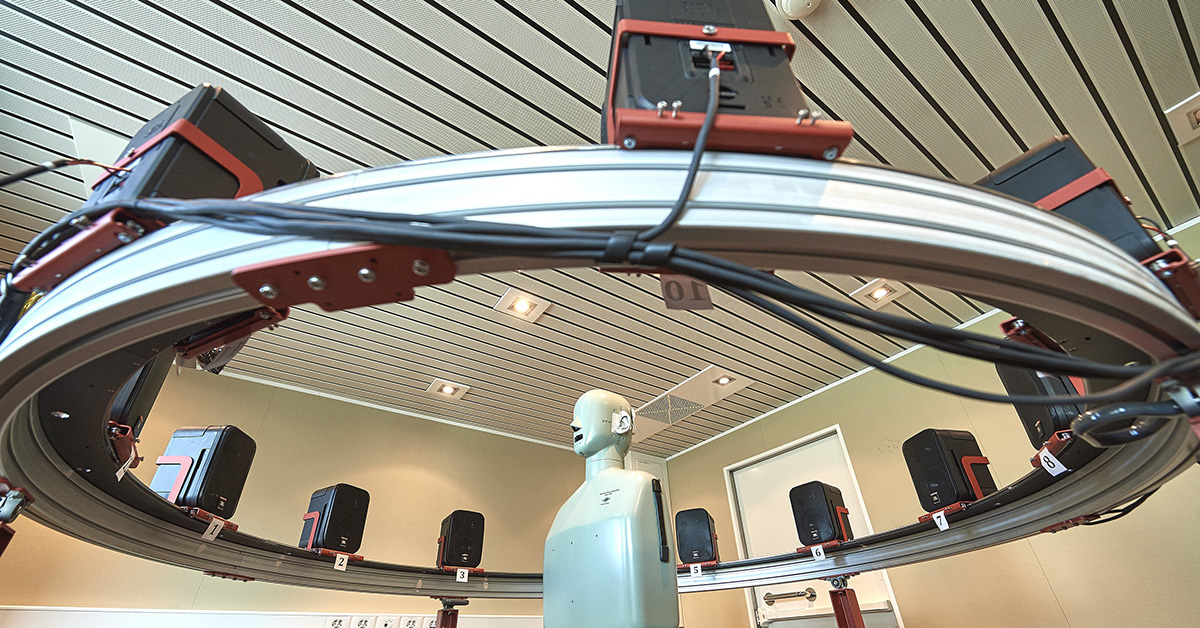2020/12/18 | Research | Rehabilitation & Neural Engineering
Bern “cocktail party” to improve hearing aids and implants
The Hearing Research Lab of the University of Bern and Inselspital has released an open access dataset to support the scientific community in improving technology-assisted hearing. The “Bern Cocktail Party” dataset was published in Nature Scientific Data and features more than 50’000 cocktail party clips. It places users of hearing aids and cochlear implants into the focus of datasets for acoustic cocktail party scenarios for the first time.
 Setup for the multi-channel audio source recordings that were used to simulate the cocktail party acoustics
(© Hearing Research Lab, ARTORG Center and Inselspital, Bern University Hospital)
Setup for the multi-channel audio source recordings that were used to simulate the cocktail party acoustics
(© Hearing Research Lab, ARTORG Center and Inselspital, Bern University Hospital)
To help patients with hearing aids and implants improve their hearing capacities, scientists aim to imitate the ability of healthy humans to filter out individual sound sources from a mixture of voices and background noises, such as would be present at a party or in a restaurant. So far, this endeavor has only seen modest success with implant wearers at a clear disadvantage in such complex acoustic scenarios.
The Bern Hearing Research Lab dataset contains more than 50’000 cocktail party scenarios recorded with 16 synchronized microphones positioned at the head and at cochlear implant audio processors of 20 people as well as a head and torso simulator. In addition to the multi-channel audio source and image recordings, the spatial coordinates of the individual microphone positions and python scripts to facilitate data processing are provided.
Link to the published data set, nature.com
Hearing Research Lab: Bern Cocktail Party